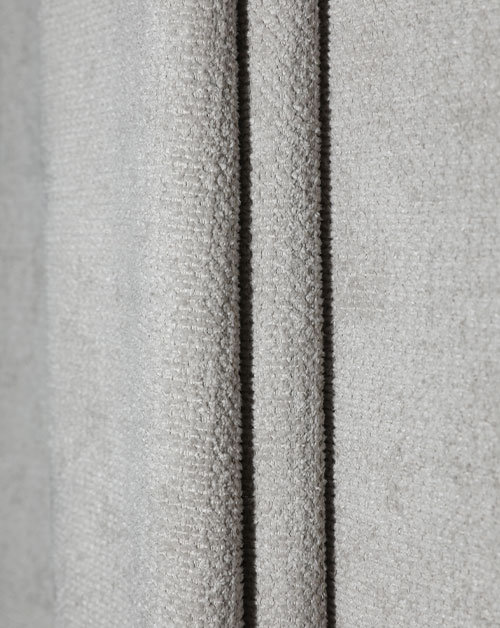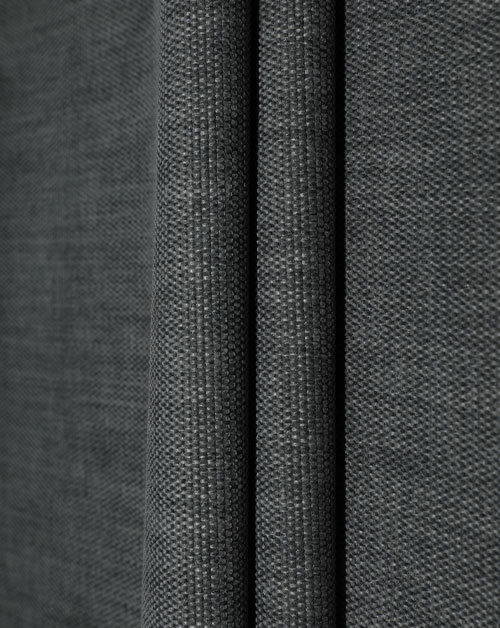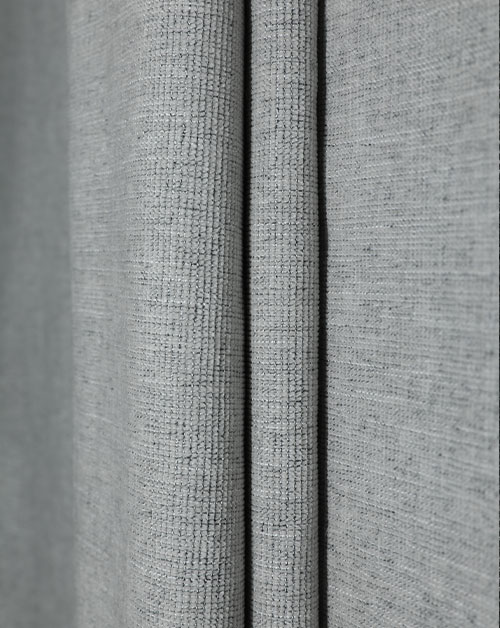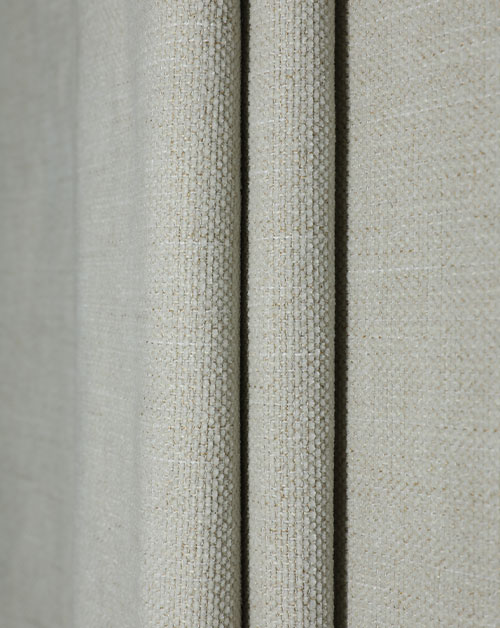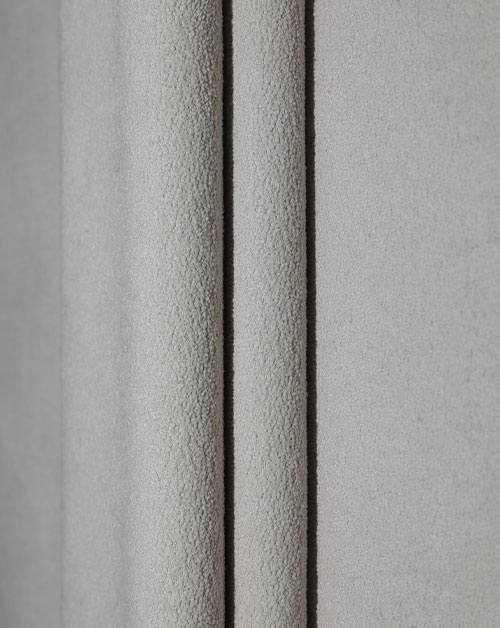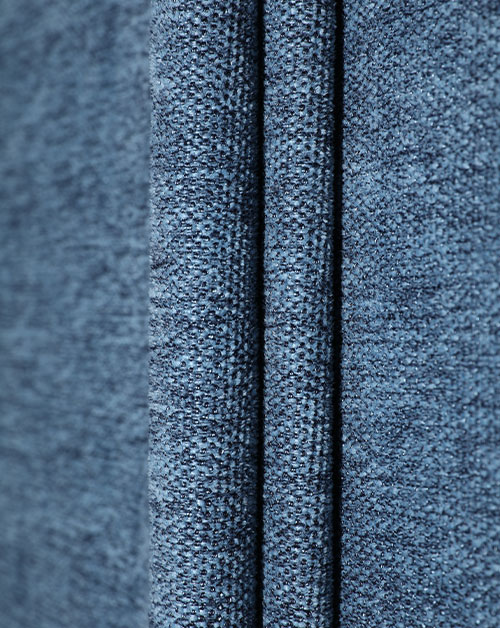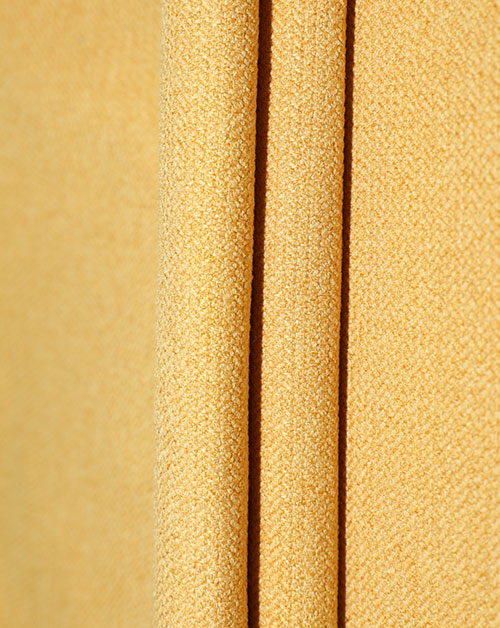In modern home design, curtains have long transcended the simple function of blocking light, becoming a core element in shaping the atmosphere of a space. Curtain fabric, the soul of this element, directly determines its visual impact, user experience, and even the overall ambiance of the space through its material, craftsmanship, and properties. From light and flowing gauze to the richness of rich velvet, each fabric expresses a distinct design language, satisfying people's diverse imaginations of their home environments.
Fabric Material: The Core Element of Curtain Design
The material of curtain fabrics is the primary criterion for distinguishing their performance and style. Different fiber compositions give fabrics distinct "characters." Natural fiber fabrics, with their natural qualities, hold a significant market share, with cotton and linen being particularly common. Cotton fabrics are soft to the touch, breathable, and have good moisture absorption, allowing them to adjust indoor comfort levels according to changes in ambient humidity. However, they are less wrinkle-resistant and prone to deformation over time, making them more suitable for creating a warm and casual home style. Linen fabrics have a naturally rugged texture, are resilient, and are durable. Sunlight filtering through linen curtains casts dappled shadows on the floor, adding a natural, rustic feel to the space. However, linen drapes poorly and requires special processing to enhance the overall styling.
Synthetic fiber fabrics have become a mainstream choice for modern curtains due to their stable physical properties. Polyester is a prime example. It offers excellent wrinkle resistance, shape retention, and shrinkage resistance, boasting high color saturation and rich tones. It also possesses certain water and stain resistance, making it easy to care for and suitable for homes seeking a minimalist and practical style. Nylon fabrics are known for their abrasion resistance and elasticity, and are often blended with other fibers to enhance their durability. However, their breathability is relatively low, so choosing a fabric based on the ventilation needs of the space should be carefully considered.

Blended fabrics of natural and synthetic fibers combine the advantages of both, offering a smart balance of quality and practicality. For example, cotton-polyester blends retain the softness and breathability of cotton while incorporating the wrinkle-resistance and wear-resistance of polyester, making them easier to maintain during daily use. Linen-silk blends combine the texture of linen with the luster of silk, creating a delicate play of light and shade under natural light, adding a touch of luxurious sophistication to any space.
Processing: The "Magic" That Empowers Fabrics with More Possibilities
Processing fabrics, like the magic of Midas Touch, can expand the functional and aesthetic boundaries of curtains beyond the original material. Coating is a key method for enhancing the practicality of curtains. By applying a special coating to the surface of the fabric, curtains can be endowed with properties such as light-blocking, heat-insulating, and waterproofing. Light-blocking coatings effectively block sunlight, making them ideal for light-sensitive spaces like bedrooms and theaters. Heat-insulating coatings reflect some ultraviolet and infrared rays, reducing heat exchange between indoor and outdoor spaces, reducing air conditioning energy consumption in summer and maintaining indoor temperature in winter, offering both environmental and energy-saving benefits.
Jacquard craftsmanship is key to the artistic appeal of curtains. This traditional craft creates diverse patterns and textures through the interweaving of warp and weft threads, eliminating the need for post-process printing or embroidery. The resulting patterns are highly three-dimensional, with natural color transitions and durable, fade-resistant. Jacquard fabrics can feature patterns ranging from simple geometric lines to intricate floral and bird motifs, catering to diverse design styles and adding exquisite detail to any space. Processes like creping and flocking can also impart unique tactile and visual effects to the fabric. Crinkling creates a natural, pleated texture, adding a casual and romantic ambiance; flocking coats the surface with a layer of fine, soft, warm fur, and high light-blocking properties, creating a tranquil and comfortable resting space.
Functional Features: From "Protection" to "Smart Living"
As people's demands for higher quality home living rise, the functionality of curtain fabrics is evolving, moving from basic light-blocking and privacy protection to more specialized features. Light-blocking is a core function of curtains, and different fabrics offer significant variations in light-blocking rates, allowing for precise selection based on space requirements, from translucent window screens to fully blackout fabrics. Living rooms, as places for receiving visitors and conducting daily activities, typically choose fabrics with a 50%-70% light-blocking ratio. This ensures ample natural light while preventing the discomfort of direct sunlight. Bedrooms, on the other hand, require a higher light-blocking ratio to help people sleep better.
Soundproofing is an increasingly important feature in modern homes. Fabric density, thickness, and specific structural design all affect its soundproofing effectiveness. High-density fabrics like velvet, cotton, and linen effectively absorb sound waves, reducing the transmission of external noise. For homes facing the street or near elevators, choosing curtain fabrics with excellent soundproofing can significantly improve living comfort.
Style Matching: Harmonious Resonance Between Fabric and Spatial Aesthetics
The choice of curtain fabric ultimately serves the overall style of the space. Only by harmoniously resonating with the home design can it truly enhance the space's aesthetic value. Modern minimalist style advocates a clean, bright design language. Fabrics with a light texture and pure colors, such as plain cotton and linen, or simple jacquard patterns, are suitable. Avoid complex patterns and decorations, and use clean lines and natural textures to highlight the airiness of the space. The Nordic style favors a fresh, natural atmosphere. Light-colored cotton and linen fabrics paired with neutral colors like white and gray, or with subtle touches of natural wood, create a warm, comfortable, and natural feel.
The light luxury style emphasizes premium materials and exquisite details. Velvet and jacquard fabrics are excellent choices. Velvet has a natural sheen and a delicate, smooth touch, infusing a space with a luxurious aura. Jacquard fabrics with a metallic sheen create subtle play of light and shadow under lighting, showcasing understated elegance. The New Chinese style emphasizes fabrics that echo traditional elements. Fabrics like cotton, linen, and satin paired with jacquard designs featuring traditional motifs like ink paintings and auspicious clouds embody the charm of Eastern aesthetics while blending seamlessly with modern living environments, creating a beautiful fusion of classic and modern.
The color of curtain fabrics should also coordinate with the color palette of the space, adhering to the principles of "light on top, dark on bottom," and "large areas harmoniously contrasting with smaller areas." If the walls and furniture are light in color, choose a slightly darker curtain fabric to create contrast and avoid a monotonous space. If the overall color scheme of the space is darker, opt for lighter-colored curtains to brighten the space. The drape of the fabric also affects the visual height of the space. Fabrics with good drape can stretch the proportions of the room, making it appear taller. Fabrics with natural pleats can soften the lines of the space and add a warm atmosphere.

From the naturalness of the material to the ingenious craftsmanship, from the practical upgrades of function to the aesthetic expression of style, curtain fabrics, with their rich connotations, have become an indispensable and important role in home design. Choosing the right curtain fabric not only meets daily functional needs but also injects unique personality and warmth into the space, making the home a true harbor for the aesthetics of life and emotional sustenance.

 English
English 中文简体
中文简体 русский
русский عربى
عربى